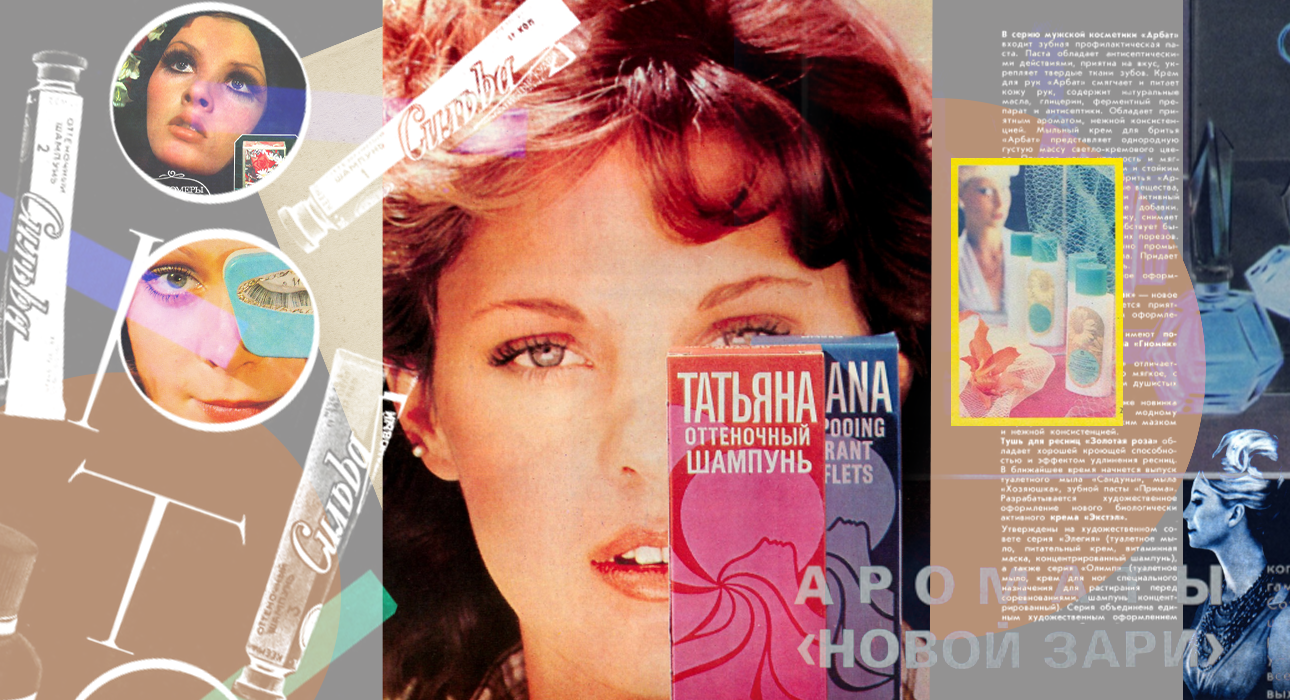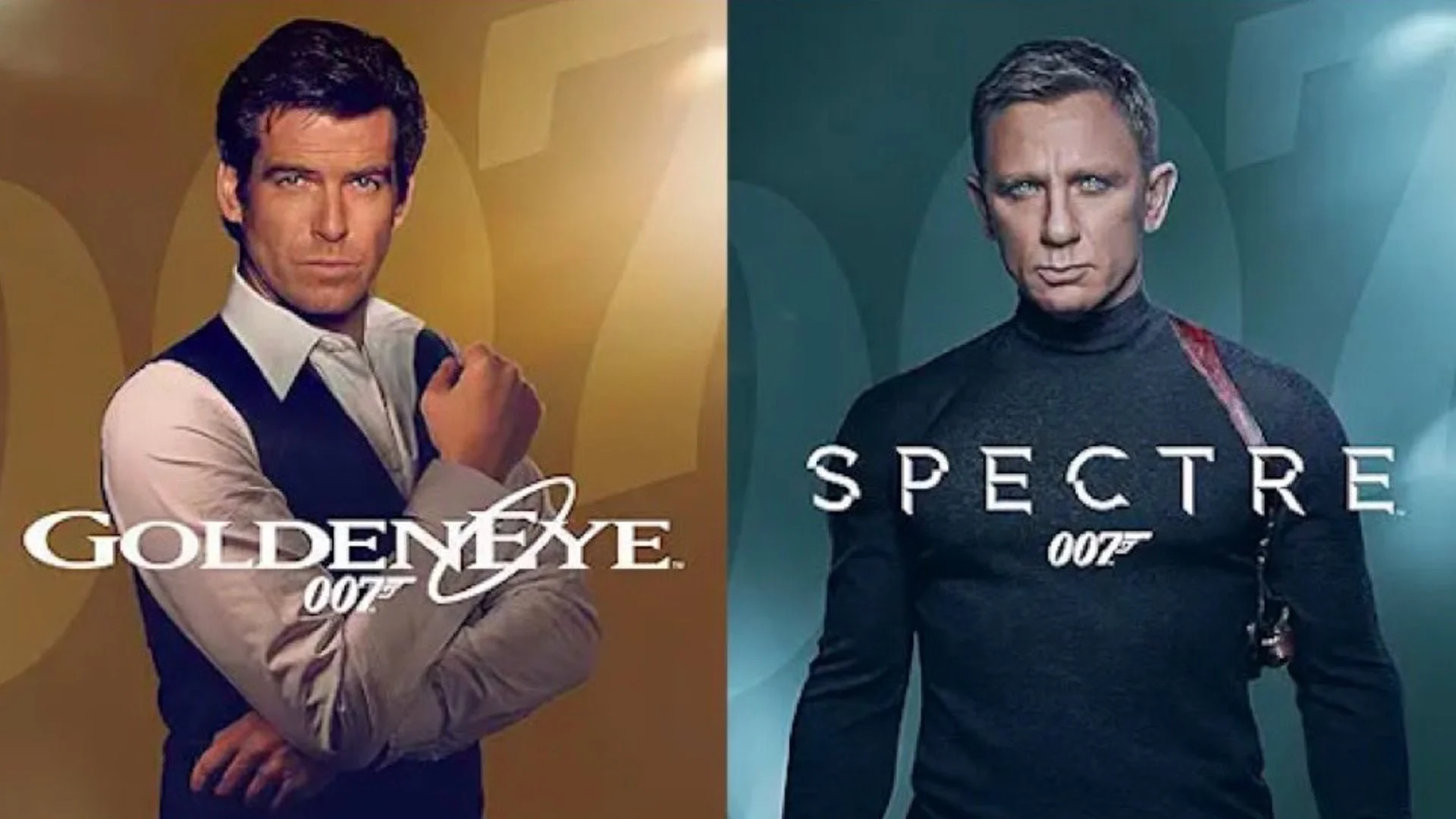For those who know the times of the USSR from the stories of grandmothers and mothers, when it comes to “Soviet cosmetics”, “Spit” mascara, “Ballet” foundation and “Prelest” hair spray most often come to mind. But this trio is not the only product in the arsenal of girls of that time.
Until the 60s, the use of decorative cosmetics was not encouraged by the state. The Soviet slogan during the NEP (New Economic Policy) period was “Cleanliness is the best beauty.” Advice and educational articles about hygiene were published in magazines and booklets, and perfume, powder and lipstick were seen as elements of bourgeois life. Nevertheless, factories continued to produce decorative cosmetics, and by the 30s of the 20th century, production increased significantly. The range of Soviet cosmetics grew and appeared more and more on the pages of magazines.
During wartime, perfumery and cosmetics production turned to producing products for the needs of the front. However, from the beginning of the 50s, the socio-political magazine for women “Rabotnitsa” again began to publish advice on skin and hair care and advertisements for cosmetics. The perfumery and cosmetics industry developed during this period. New shades of mascara and lipstick colors have emerged. And by the 60s, the range of skin care cosmetics expanded – liquid foundations, aromatic creams “Strawberry” and “Strawberry”, products for problem skin “Ugrin” and “Antiugrin” and even Sanskrins “Luch”, “Shield” and “Sunscreen” “
Girls mostly learned about new perfumes and cosmetics from the monthly “New Products” newsletter and the Polish magazine “Wanda”. And we invite you to follow the evolution of Soviet cosmetics and advertising through the pages of the magazine.
1963
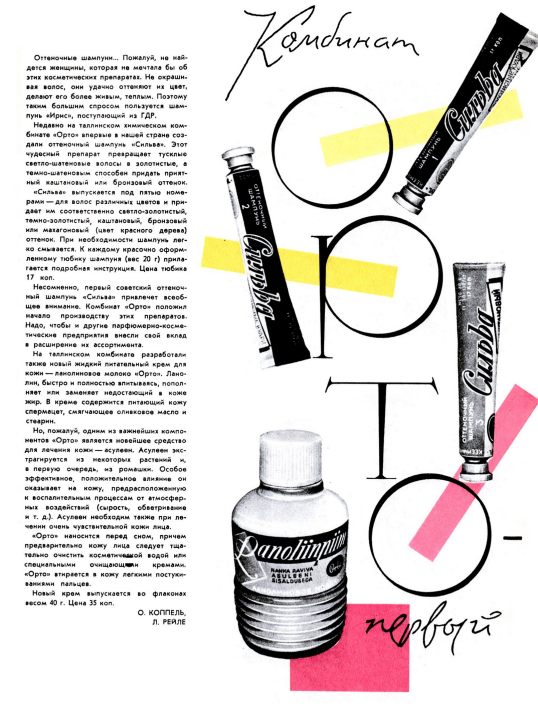
Before the first hair coloring products appeared, Soviet women used home methods. Blondes – chamomile infusion, lemon juice and rhubarb to preserve color. And brunettes rinsed their hair with coffee, strongly brewed black tea or tincture of green walnut shells.
In 1963, the Ortho chemical factory launched the first colored hair shampoo called Silva. His palette included five colors: light gold, dark gold, chestnut, bronze and mahogany (mahogany color).
“Undoubtedly, the first Soviet color shampoo “Silva” will attract everyone’s attention. The Ortho factory started production of these drugs. “Other perfumery and cosmetics businesses also need to contribute to expanding the product range,” he said.– Wrote in “New Products” magazine.
1968
-
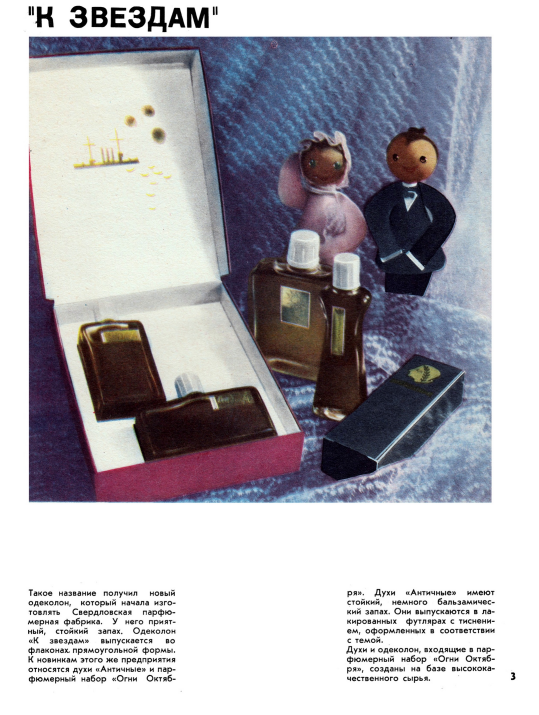
Magazine “New Products”. 1968. Issue 10 -
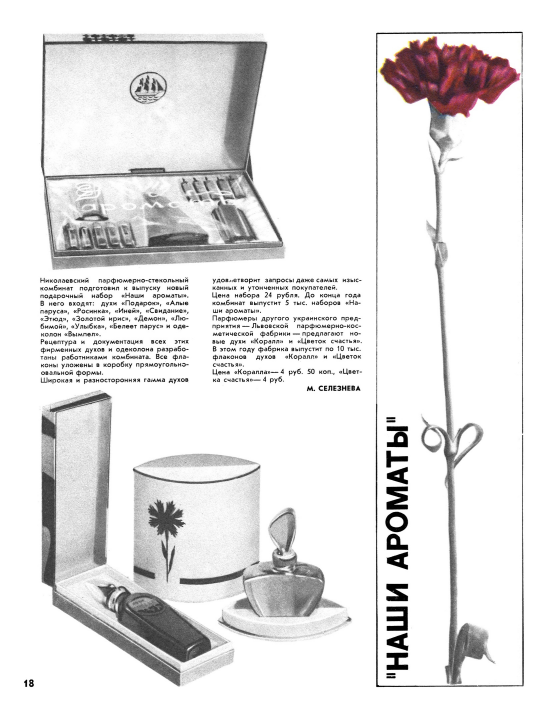
Magazine “New Products”. 1968. Issue 10
The women’s press advertised mainly perfume and skin care products and almost never decorative cosmetics. It was believed that powder, mascara or blush could only be applied to healthy, well-groomed skin.
1970
-
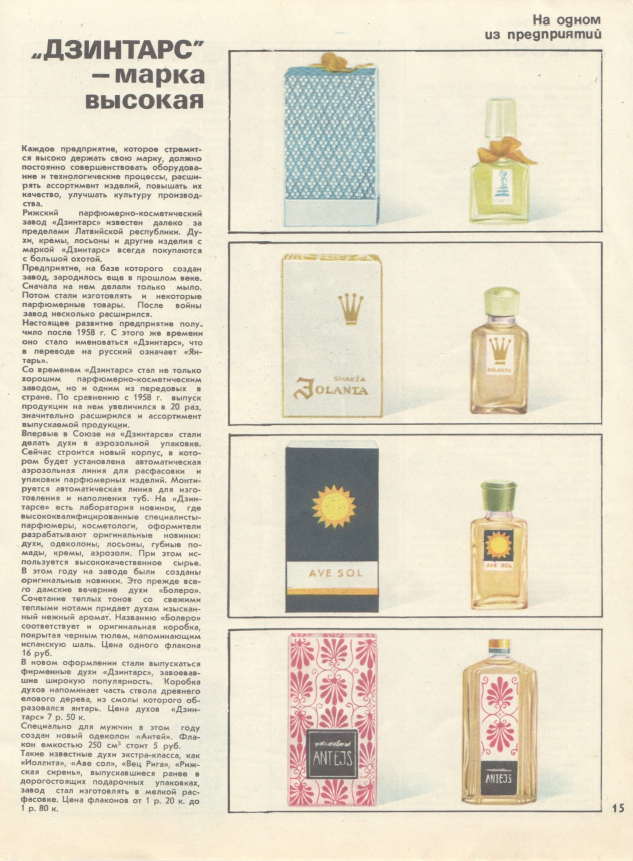
Magazine “New Products”. 1970. No.4 -

Magazine “New Products”. 1970. No.7
In the 70s, the first compact powders “Elena” and “Risovaya” began to appear, and by the end of the decade some Soviet women were even able to purchase the French Lancome, which had a golden rose on its packaging.
Magazines mostly advertised perfumes and new products of Soviet cosmetic factories. For example, the well-known varnish “Prelest”, but in a new aerosol package.
“Women, buy Prelest hairspray and your hair will always be in perfect condition.”– he said in the magazine “New Products”.
1971
-
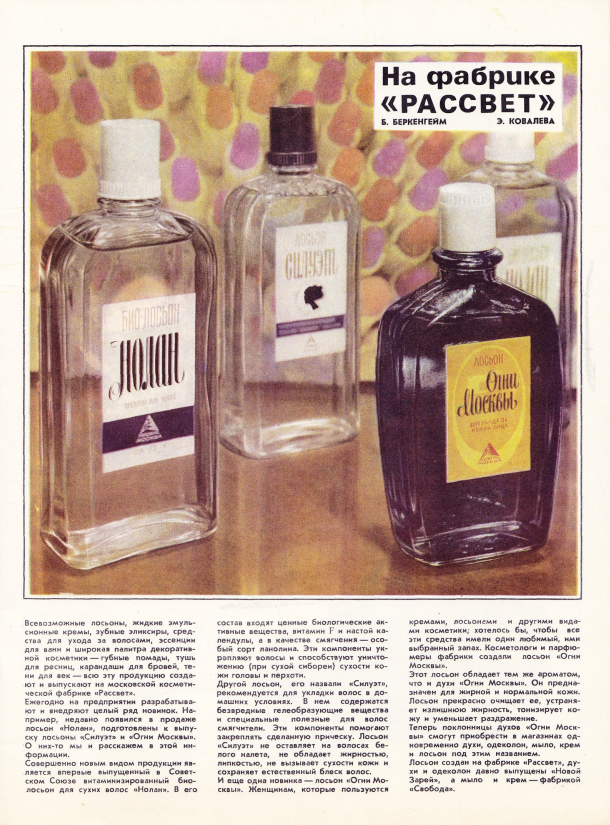
Magazine “New Products”. 1971. No.4 -
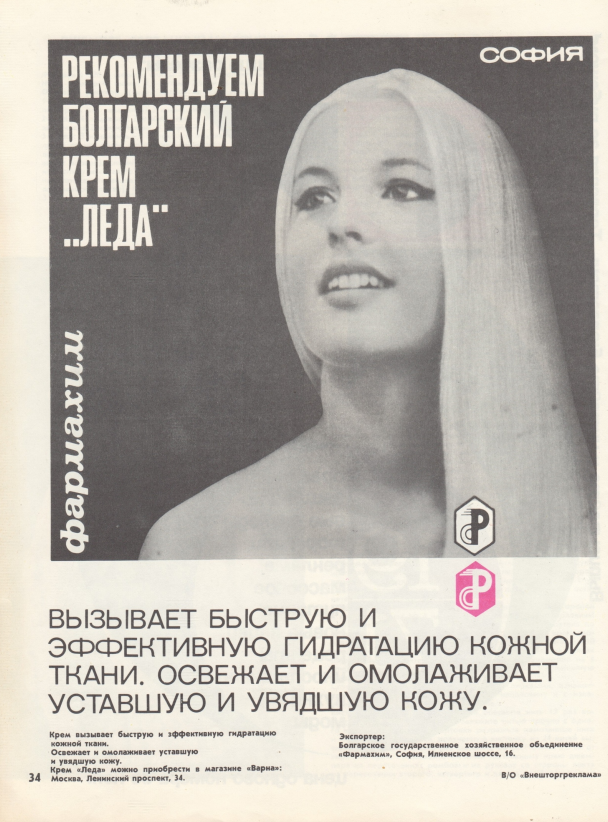
Magazine “New Products”. 1971. No.2
The lotion format was perhaps one of the most popular formats of the 70s. “Nolan”, “Moscow Lights”, “Silhouette” – some lotions were intended for hair styling, others were intended for oily and normal skin care.
1972
-
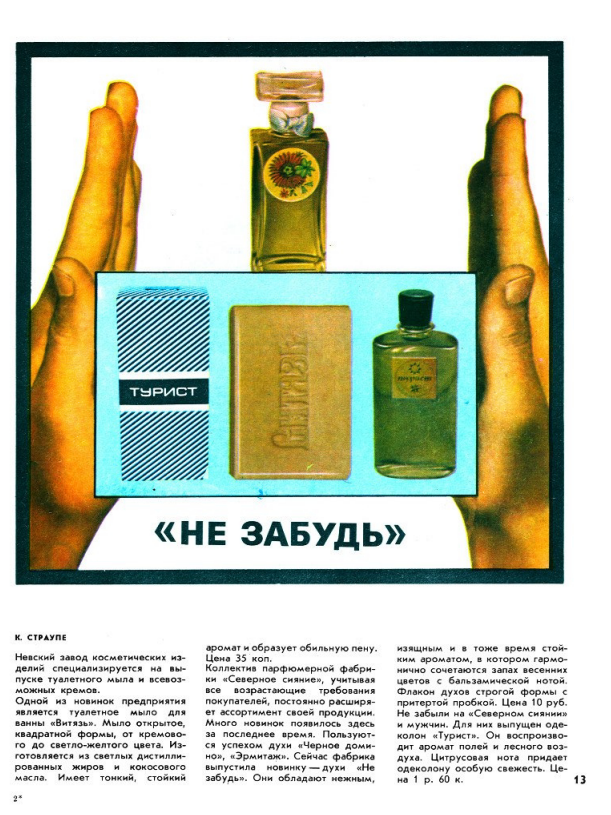
Magazine “New Products”. 1972. No.4 -
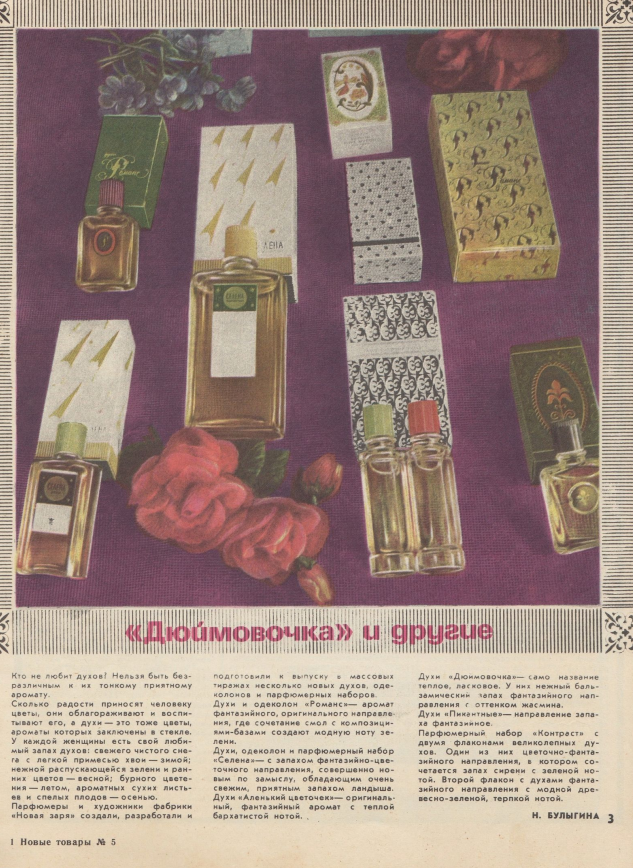
Magazine “New Products”. 1972. No.5
“Who doesn’t love perfume! You cannot remain indifferent to their light pleasant aroma. – these words open, for example, an article about new perfumes released by the Novaya Zarya factory.
1973
-
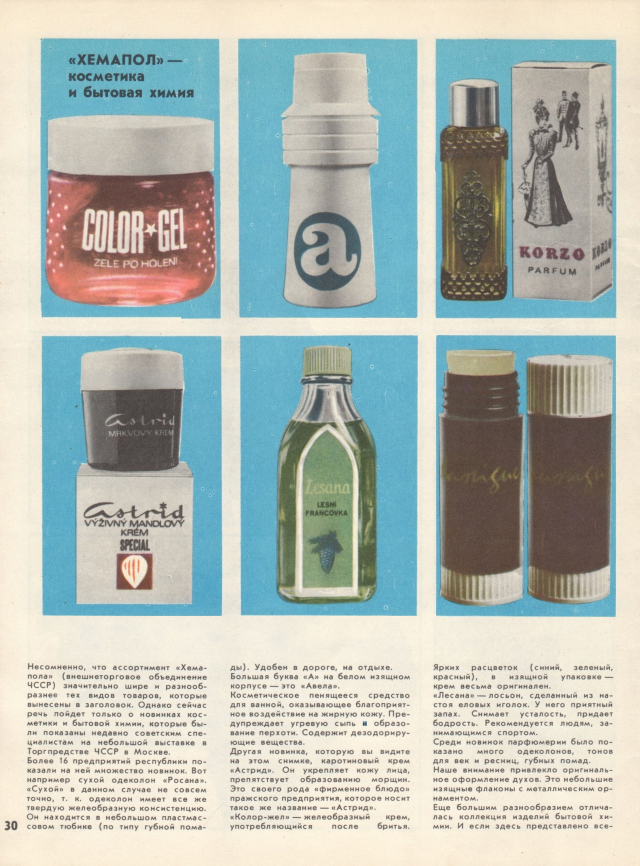
Magazine “New Products”. 1973. Issue 6 -
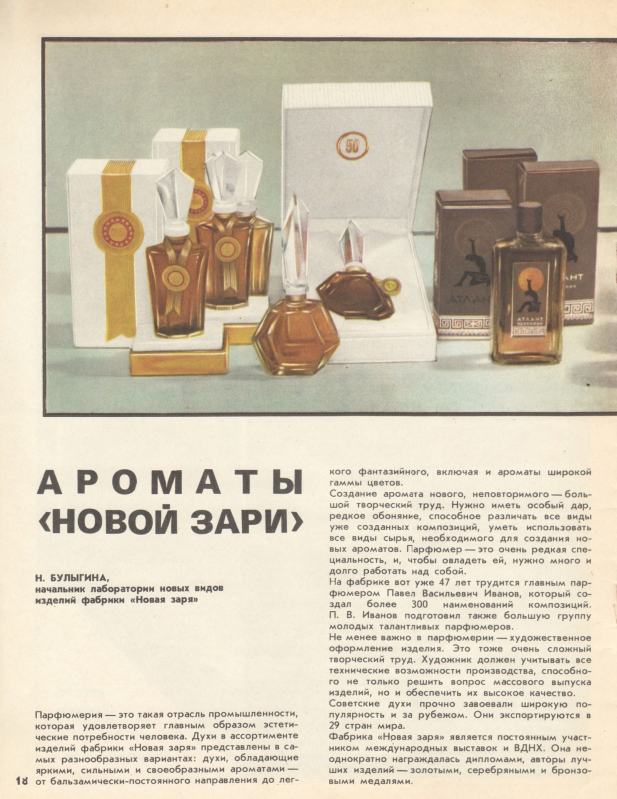
Magazine “New Products”. 1973. No.3
In 1973, the Czechoslovak factory Hemapol launched the first dry cologne, aftershave in jelly format (!) and Astrid carotene cream, which prevents the appearance of wrinkles.
1977
-
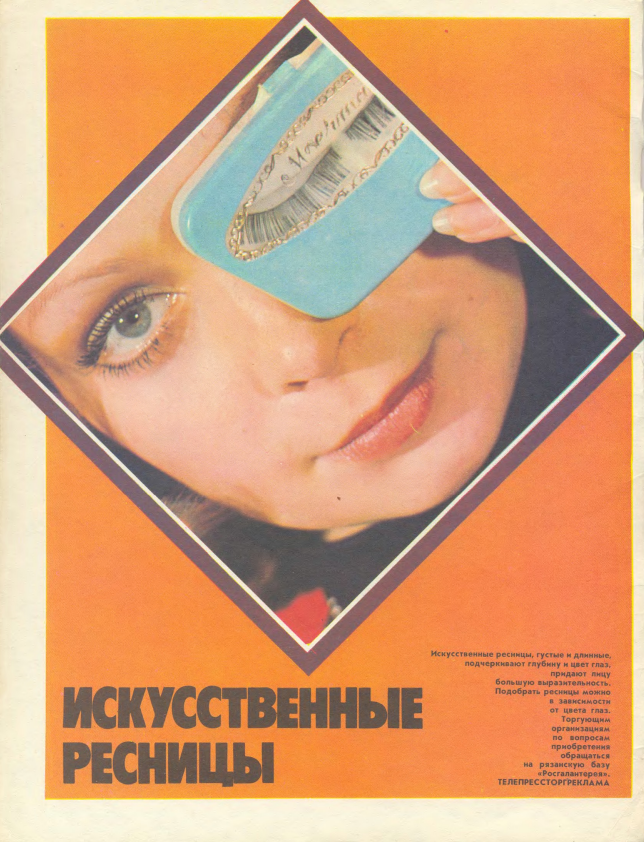
Magazine “New Products”. 1977. No.3 -
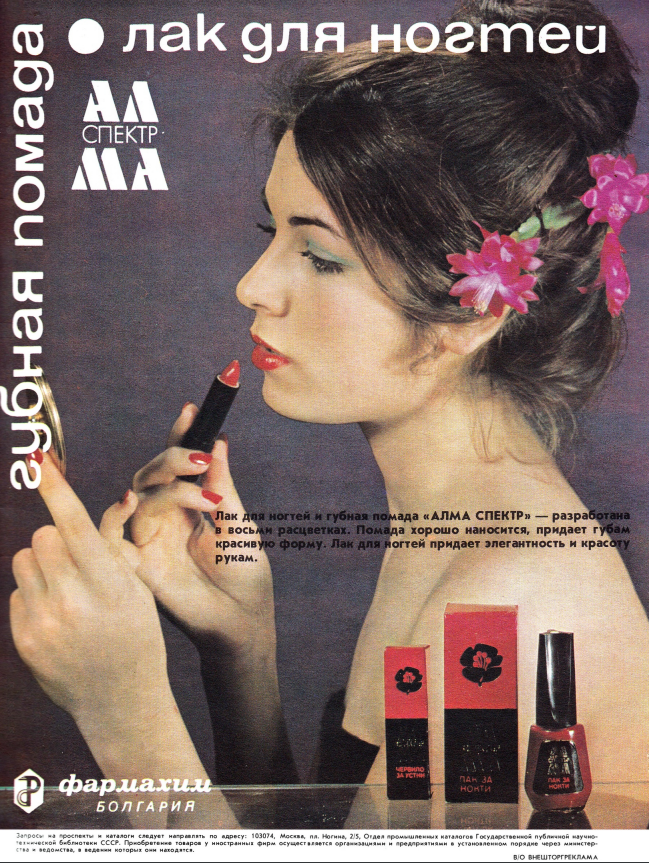
Magazine “New Products”. 1977. No. 1
Advertisements in magazines kept pace with the times, becoming brighter and bolder. Now you can see not only skin care products but also decorative cosmetics on the pages. For example, lipstick and even artificial eyelashes.
-
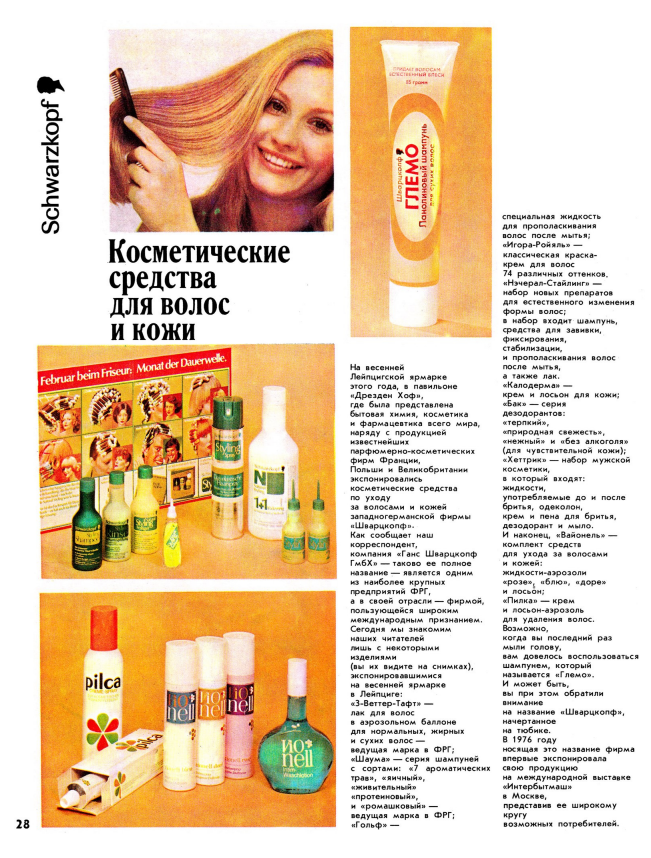
Magazine “New Products”. 1977. Issue 8 -
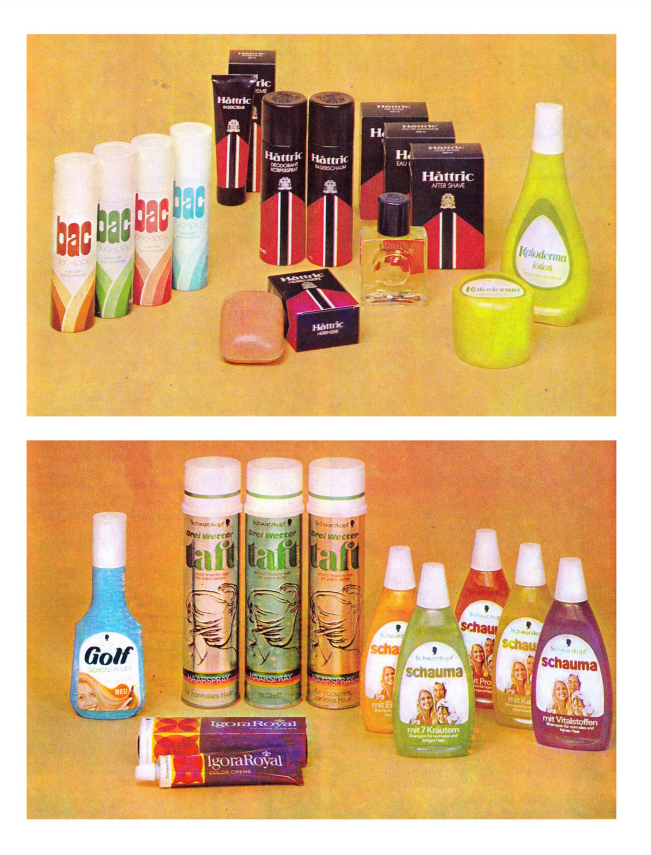
Magazine “New Products”. 1977. Issue 8
Advertisements appear in the magazines of the West German companies Schwarzkopf, Schaum and Taft and their products for hair care and locking strands, and even a natural hair restyling kit (read: curling kit).
1978
-
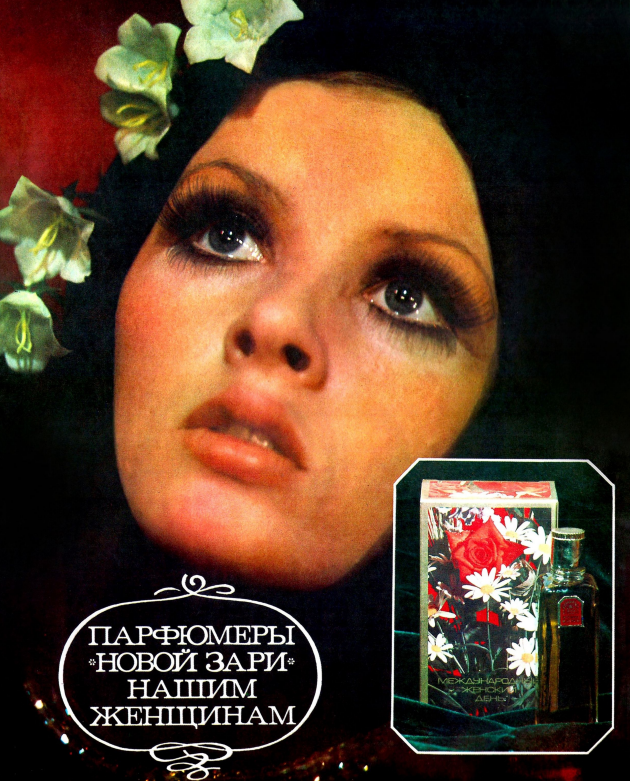
Magazine “New Products”. 1978. No.3 -
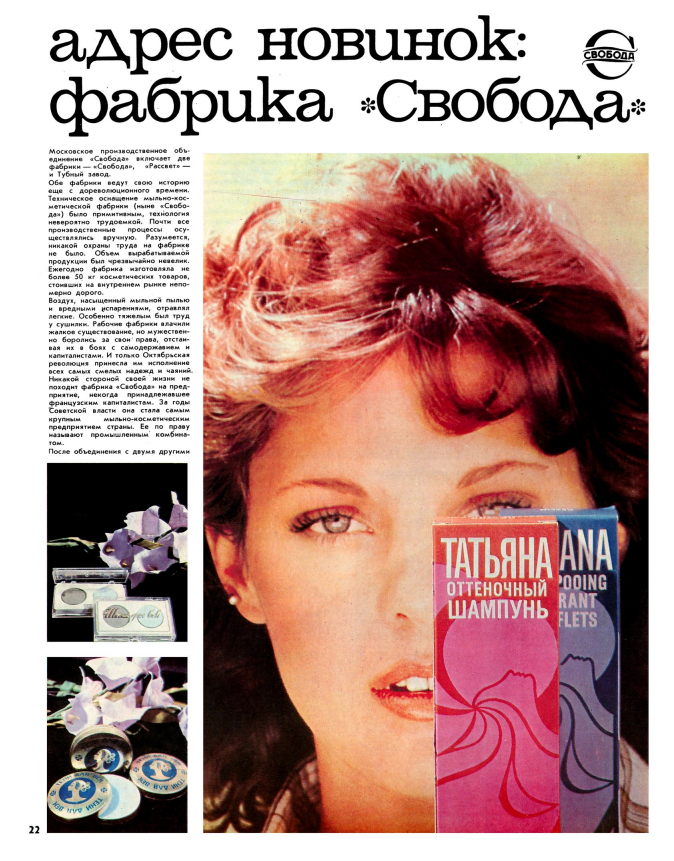
Magazine “New Products”. 1978. No.2 -
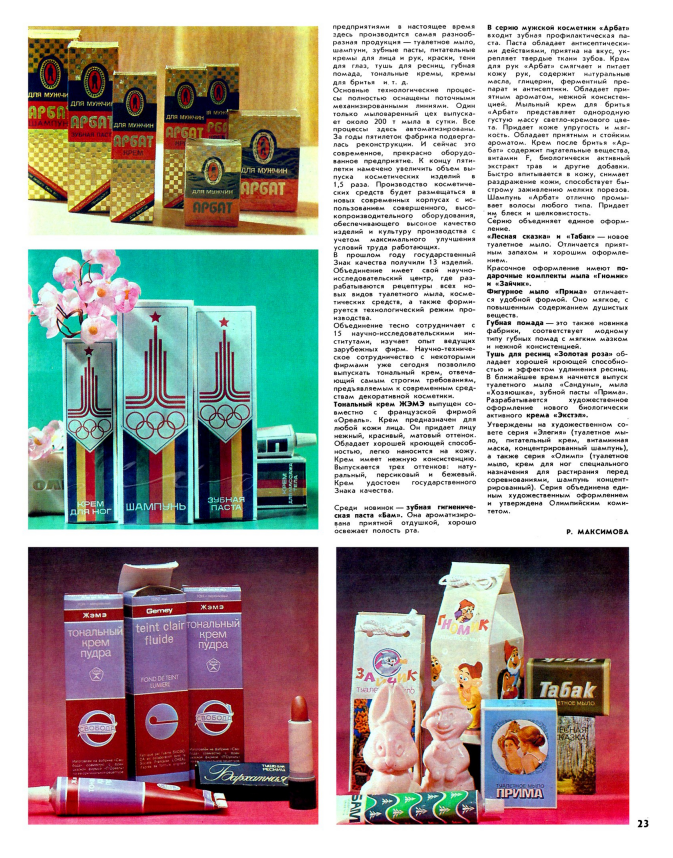
Magazine “New Products”. 1978. No.2
The Svoboda factory became a leader in the production of cosmetics and perfumes. It merges with two other organizations and cooperates closely with research institutes and foreign brands. The result of this work is the foundation “Jamet”, produced together with the French “Oreal” (as L’Oreal was previously translated).
1982
-
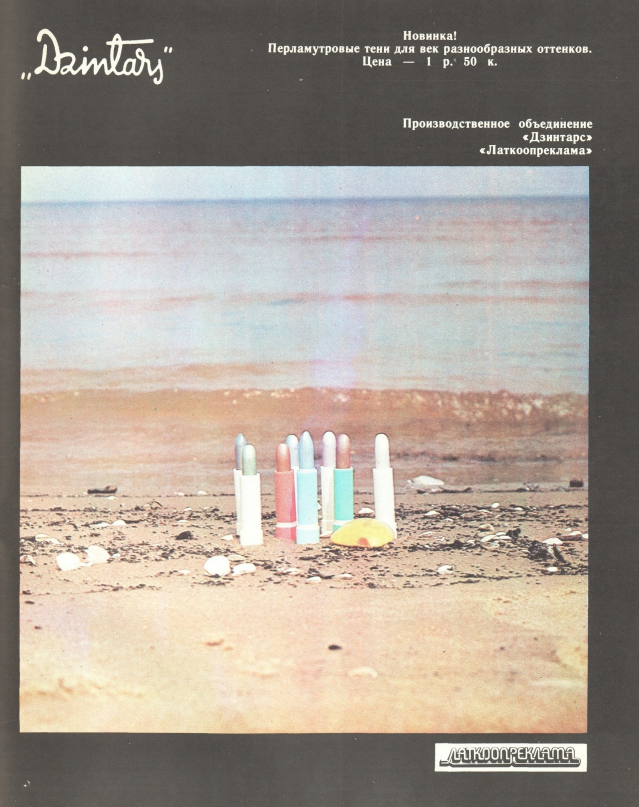
Magazine “New Products”. 1982. No.4 -
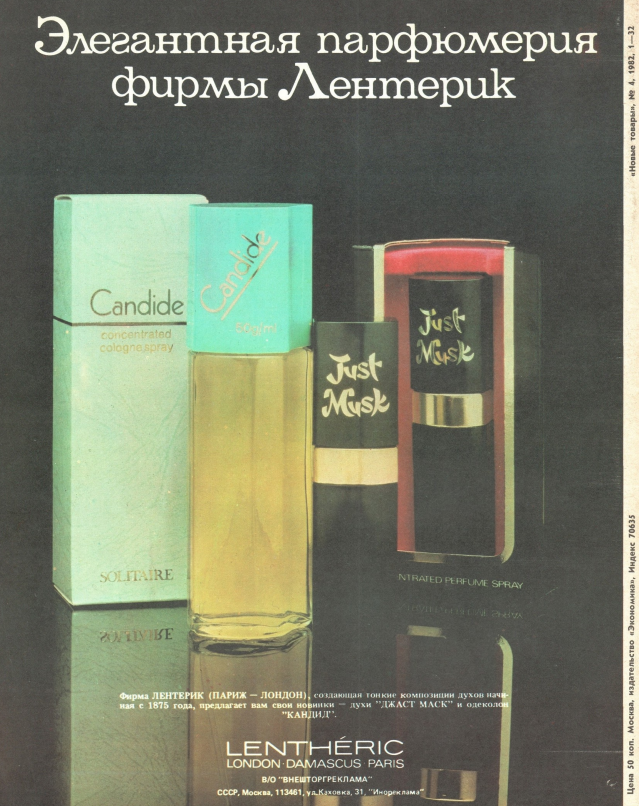
Magazine “New Products”. 1982. No.4
Advertising shoots are becoming more creative. Shadows now “rest” not just on a flat surface, but on the seashore. This is what the advertisement for the pearl eyeshadow collection of the Latvian company Dzintars looked like.
1987
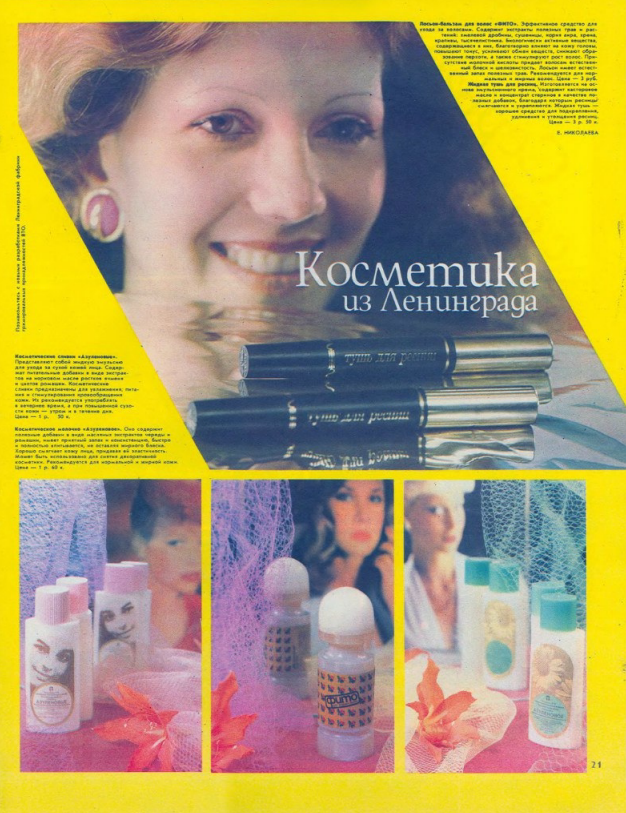
In the late 80s, mascara was still a luxury item. Those who could afford foreign brands were waiting in line. And those who could not do this used their native Leningradskaya. Domestic liquid mascara had just begun to appear on the shelves, and since it had not yet inspired confidence, advertising was used in magazines.
80s fashion called for bright makeup – long black eyelashes, purple eyeshadow, red lipstick and bright blush. Therefore, it was impossible to do without mascara.
1988
-
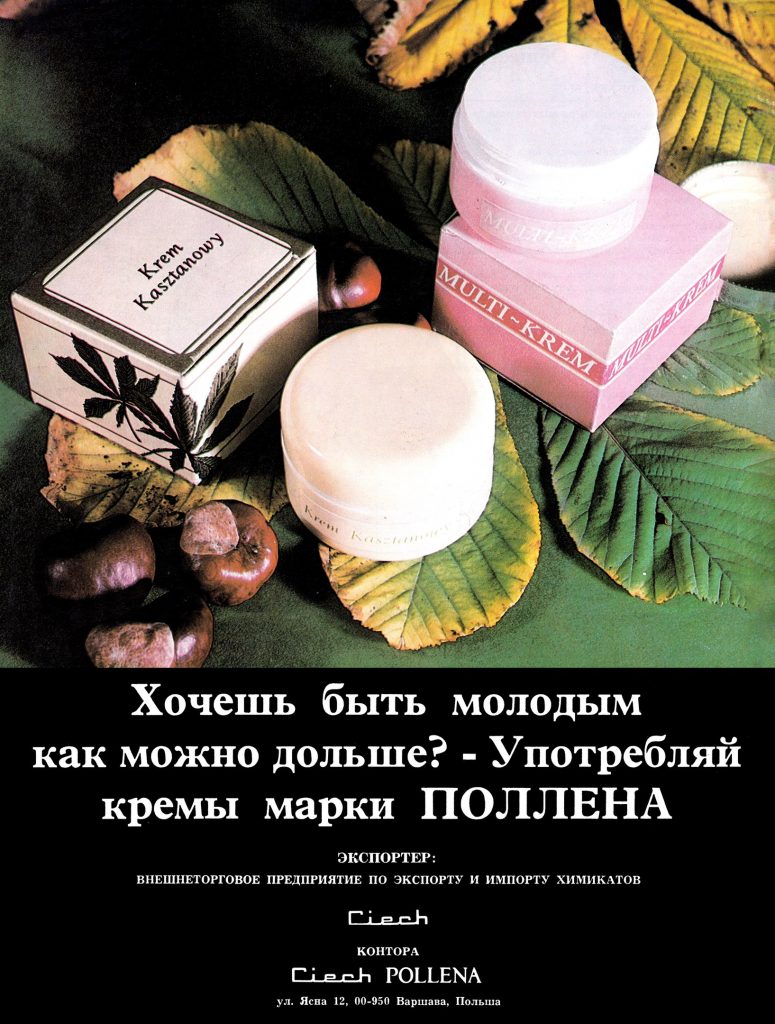
Magazine “Wanda”. 1988. No.2 -
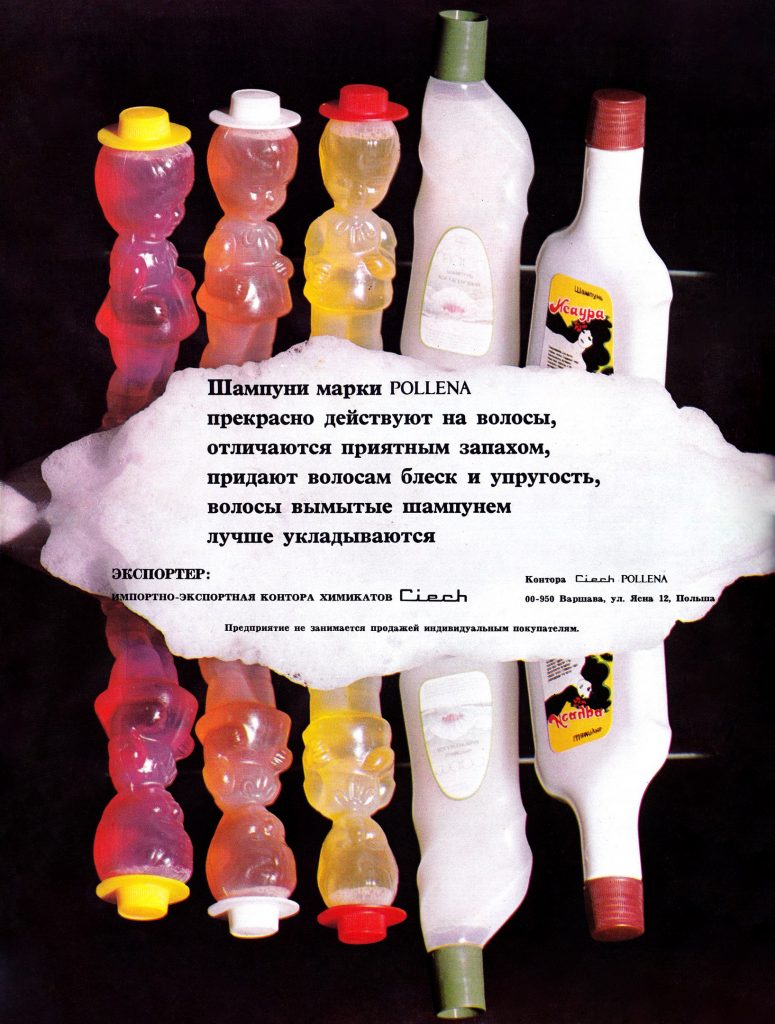
Magazine “Wanda”. 1988. No.2 -
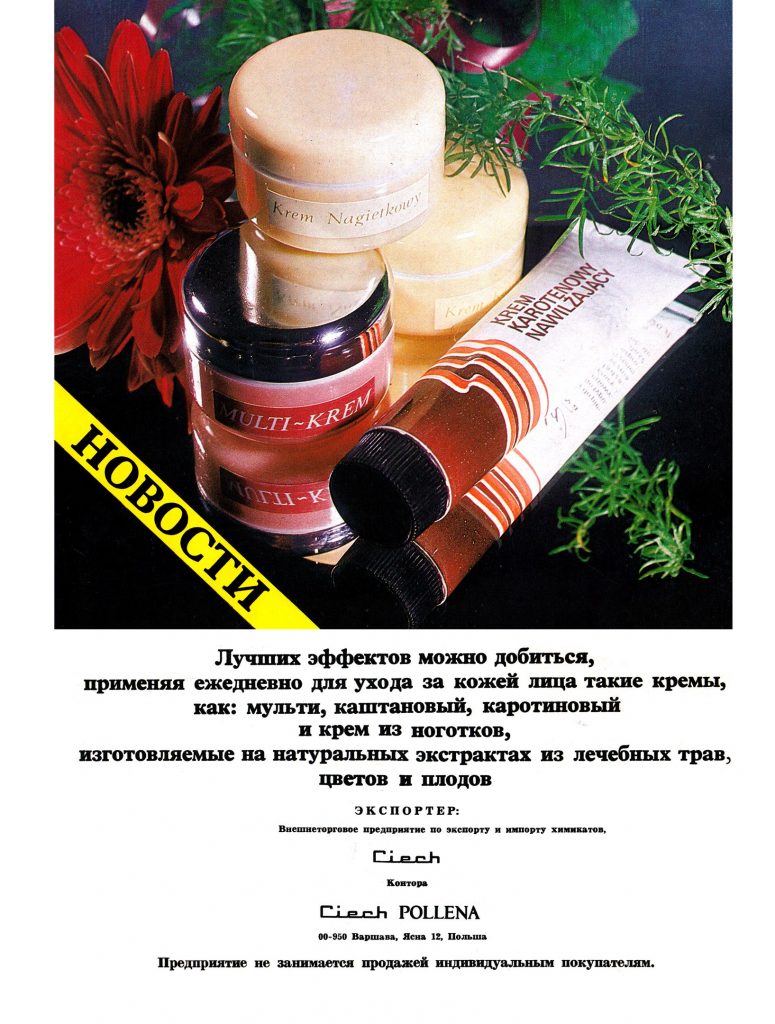
Magazine “Wanda”. 1988. No.2
Another alternative to French cosmetic brands was Polish. Especially the Pollena company. Cosmetics can be purchased at Wanda stores. And the advertising headlines promised: “Do you want to be young for as long as possible? Use Pollena brand creams.
Stores of foreign brands were opened in the late 80s and early 90s. High prices and huge queues became permanent signs of that time. While magazines were still advertising domestic cosmetics, international brands first drew attention to Soviet women and then instilled confidence. The golden age of Soviet beauty was rapidly waning, and foreign brands were just beginning their rise.
Source: People Talk
I’m Roger Gritton, and I’ve been writing for the The Fashion Vibes for over 5 years now. My specialty is beauty news; I’m passionate about covering the latest trends, products, and innovations in the industry. In my time there, I’ve become known as an authority on all things beauty-related.
I love discovering new experts to interview, researching up-and-coming ingredients and techniques that are making their way onto our beauty shelves and highlighting people who are making a difference in the world of cosmetics. My work has appeared not only on The Fashion Vibes, but also several other publications including the New York Times Magazine, Allure Magazine and Refinery29.

